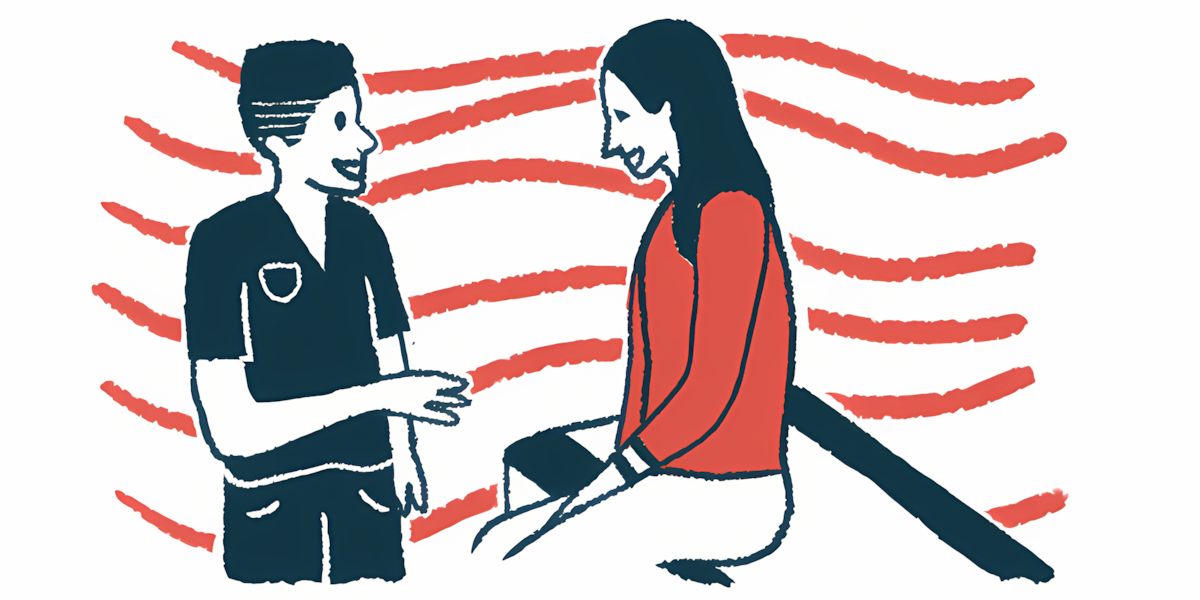Blood pressure treatment eases Parkinson’s tremor in small trial
Propranolol seen to lower tremor intensity at rest and during stress

Propranolol, a blood pressure medication, significantly eased tremor in people with Parkinson’s disease, either at rest or during induced stress, according to findings in a small, placebo-controlled clinical trial.
The treatment also significantly attenuated tremor-related brain activity, as indicated on MRI scans.
“In about forty percent of patients, [levodopa] is not effective against tremors,” Rick Helmich, MD, PhD, the study’s lead author and neurologist at the Radboud University Medical Centre, in the Netherlands, said in a university news story.
“In that case, we first increase the dose, but if that doesn’t work, propranolol is an option,” Helmich noted. “However, we must be cautious about side effects, such as low blood pressure.”
Tremor often begins early in the course of Parkinson’s disease
Details of the small clinical trial were in the study “Propranolol Reduces Parkinson’s Tremor and Inhibits Tremor-Related Activity in the Motor Cortex: A Placebo-Controlled Crossover Trial,” published in the Annals of Neurology.
About 70% of people in the early stages of Parkinson’s experience tremor — an involuntary, uncontrollable muscle contraction that manifests as shaking body parts, most often in the hands. Resting tremor, which occurs when the muscles are relaxed and still, is the most common form of Parkinson’s-related tremor.
Studies demonstrate that tremor in Parkinson’s worsens during times of stress, and patients often rate tremor as their most stress-sensitive symptom. Moreover, while standard treatments like levodopa can effectively help to ease tremor, the benefits are diminished by stress.
“Tremors act as a sort of barometer for stress; you see this in all people with Parkinson’s,” Helmich said.
Propranolol (brand names include Inderal) is a beta-blocker, a medicine commonly used to treat high blood pressure, irregular heartbeats, and anxiety. Beta-blockers work by inhibiting the action of stress hormones like adrenaline and noradrenaline. Propranolol is also a standard treatment for essential tremors, a condition marked by tremors without other neurological symptoms.
Although reports suggest that propranolol might reduce tremors in people with Parkinson’s, no thorough research has explored its potential effects.
Helmich and his team evaluated 27 people with Parkinson’s and prominent resting tremors during a two-day test of the therapy. On one day, participants were blindly given 40 mg of propranolol and, on the other, a placebo.
A hand device assessed the severity of tremors during both days, and MRI scans tracked brain activity. Tests were conducted while at rest and during stress induced by doing mathematical calculations. The stress response was measured by pupil size and heart rate.
“We hypothesized that propranolol would reduce resting tremor particularly during cognitive load,” the scientists wrote.
Propranolol seen to lower tremor intensity at rest and during math test
Analysis showed that propranolol significantly eased tremor intensity (called power in study) both at rest and during stress compared with a placebo. Tremor frequency, however, was unaffected by propranolol or stress. Propranolol also eased postural tremor, assessed when the arms were stretched forward.
“Apparently, our stress system is occasionally active, even at rest,” said the study’s first author, Anouk van der Heide, PhD. “We previously thought that the stress hormone system was only active under stress, but apparently, that’s too simplistic. It also plays a role at rest.”
Pupil size increased during stress but was unaffected by treatment. In contrast, patients’ heart rate increased during stress compared with rest during the placebo session, but not during the session with propranolol treatment. Patients also perceived the mathematical calculations as more stressful than being at rest, particularly when given a placebo.
In MRI scans, propranolol significantly reduced tremor-related activity in the motor cortex, the brain region that controls voluntary movement, compared with a placebo, regardless of a rest or stress period.
“Based on our study, we now think that the stress hormone noradrenaline acts as an amplifier, which increases tremor intensity in the brain’s movement area,” Helmich said. “Propranolol inhibits this amplifying effect and thus reduces symptoms.”
Most study patients knew when they were on treatment or a placebo
After completing the second testing day, 19 of 27 participants (70.37%) correctly guessed in which order they had received the medication.
“This placebo-controlled study shows that propranolol is effective in reducing [Parkinson’s] tremor across both stressful and resting conditions,” the scientists concluded. “Insights from this study may improve treatments that attenuate the influence of the stress system on [Parkinson’s] tremor.”
Helmich’s team also is investigating whether lifestyle changes may help with Parkinson’s tremor.
“It doesn’t take much to trigger a stress response, causing people to tremble more. Even something as simple as wondering: did I lock the front door? can set it off,” Helmich said. “We are currently investigating whether mindfulness can positively influence the stress system.”







